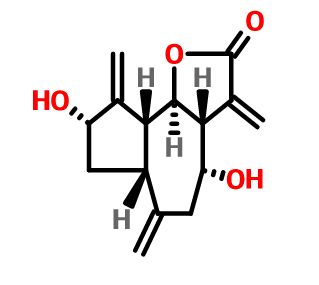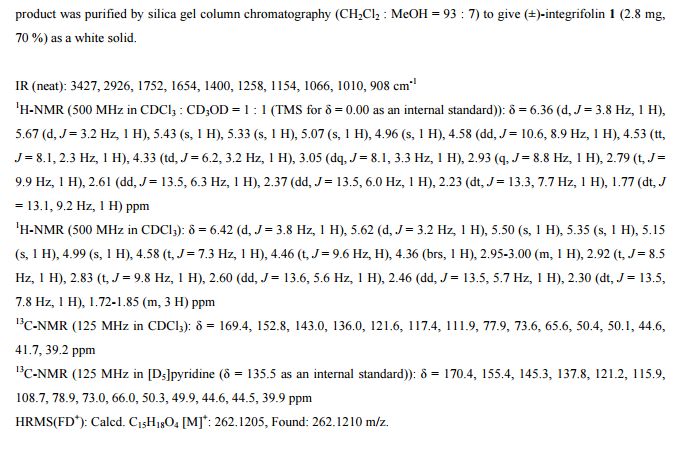Image may be NSFW.
Clik here to view.
CAS 89647-87-0
-
- Azuleno[4,5-b]furan-2(3H)-one, decahydro-4,8-dihydroxy-3,6,9-tris(methylene)-, [3aR-(3aα,4β,6aα,8β,9aα,9bβ)]-
- (3aR,4R,6aR,8S,9aR,9bR)-Decahydro-4,8-dihydroxy-3,6,9-tris(methylene)azuleno[4,5-b]furan-2(3H)-one
- 8-epi-Deacylcynaropicrin
- 8β-Hydroxyzaluzanin C
- Integrifolin
- Integrifolin (guaianolide)
Paper
Image may be NSFW.
Clik here to view.
(±)-Integrifolin
Wiley-VCH Verlag GmbH & Co. KGaA, Weinheim
Total Synthesis of (±)-Integrifolin
Compound from plants keeps human cancer cells from multipying
Read more at Wiley-VCH Verlag GmbH & Co. KGaA, Weinheim
(±)-Integrifolin
Image may be NSFW.
Clik here to view.
Banksia integrifolia
Coast Banksia
Family: Proteaceae
Banksia integrifolia is a tall shrub or small tree 6 – 16m tall. It is common in sandy coastal areas, but also grows in the forests of tablelands. The light grey bark is hard and rough.
Mature leaves 5 -10 cm long, are stiff, entire (untoothed), dull dark green above and hairy-white underneath. They are generally lanceolate. Younger leaves are irregularly toothed and shorter than the mature leaves. The species name ‘integrifolia’ means whole-leaved.
The pale yellow flower spikes of Banksia integrifolia range from 7-14cm long and 7cm wide. The bent styles emerge from individual flowers on the spike, straightening and spreading.
A short time after flowering, the seed pods protrude cleanly from the woody cone and open to shed black, papery, winged seeds.
Banksia integrifolia flowers from January to June.
Image may be NSFW.
Clik here to view.
Image may be NSFW.
Clik here to view.
https://www.jstage.jst.go.jp/article/cpb1958/33/8/33_8_3361/_pdf
///////(±)-Integrifolin, human cancer cells, multipying
C=C1C(=O)O[C@@H]2[C@H]3C(=C)[C@@H](O)C[C@H]3C(=C)C[C@@H](O)[C@@H]12
